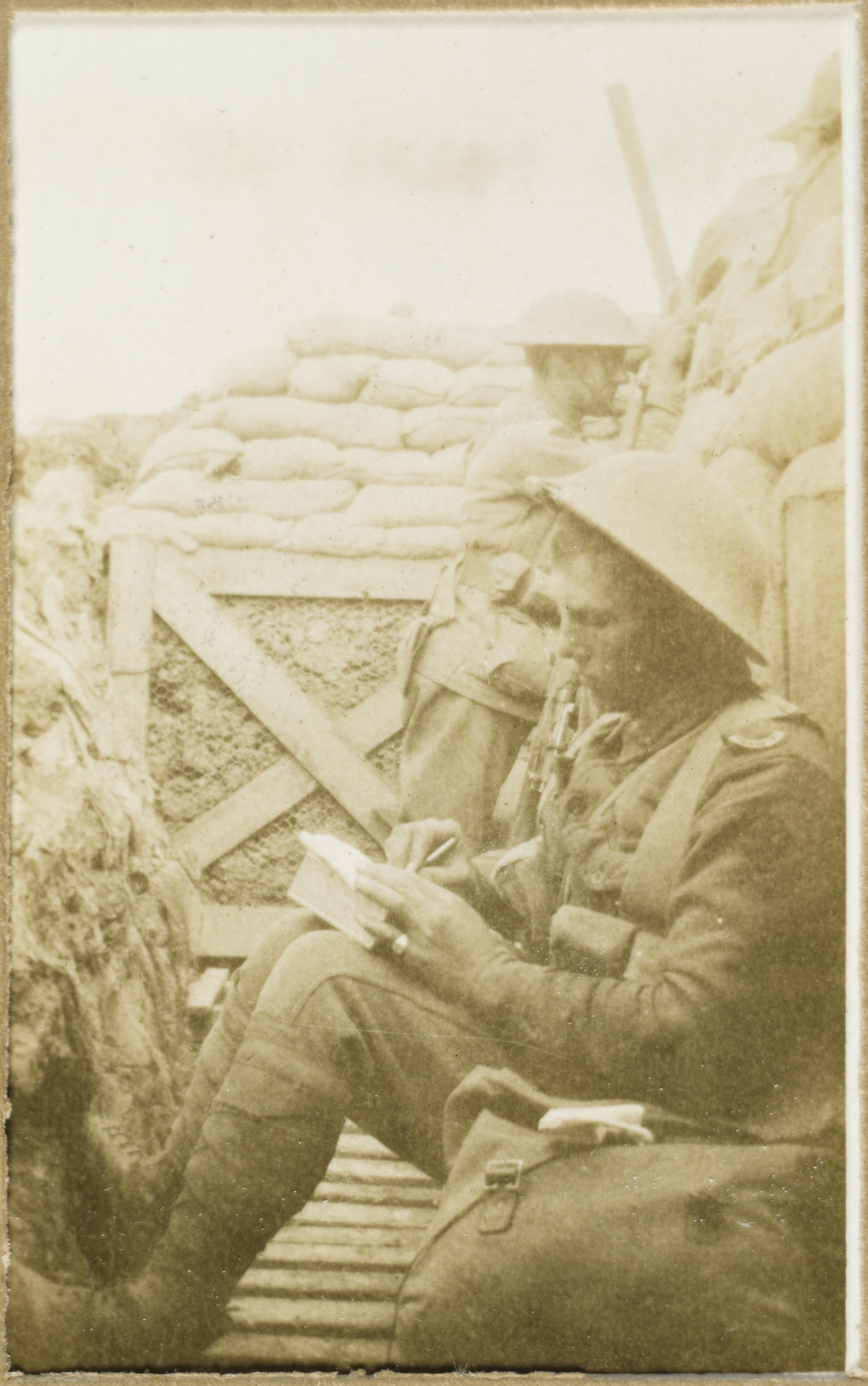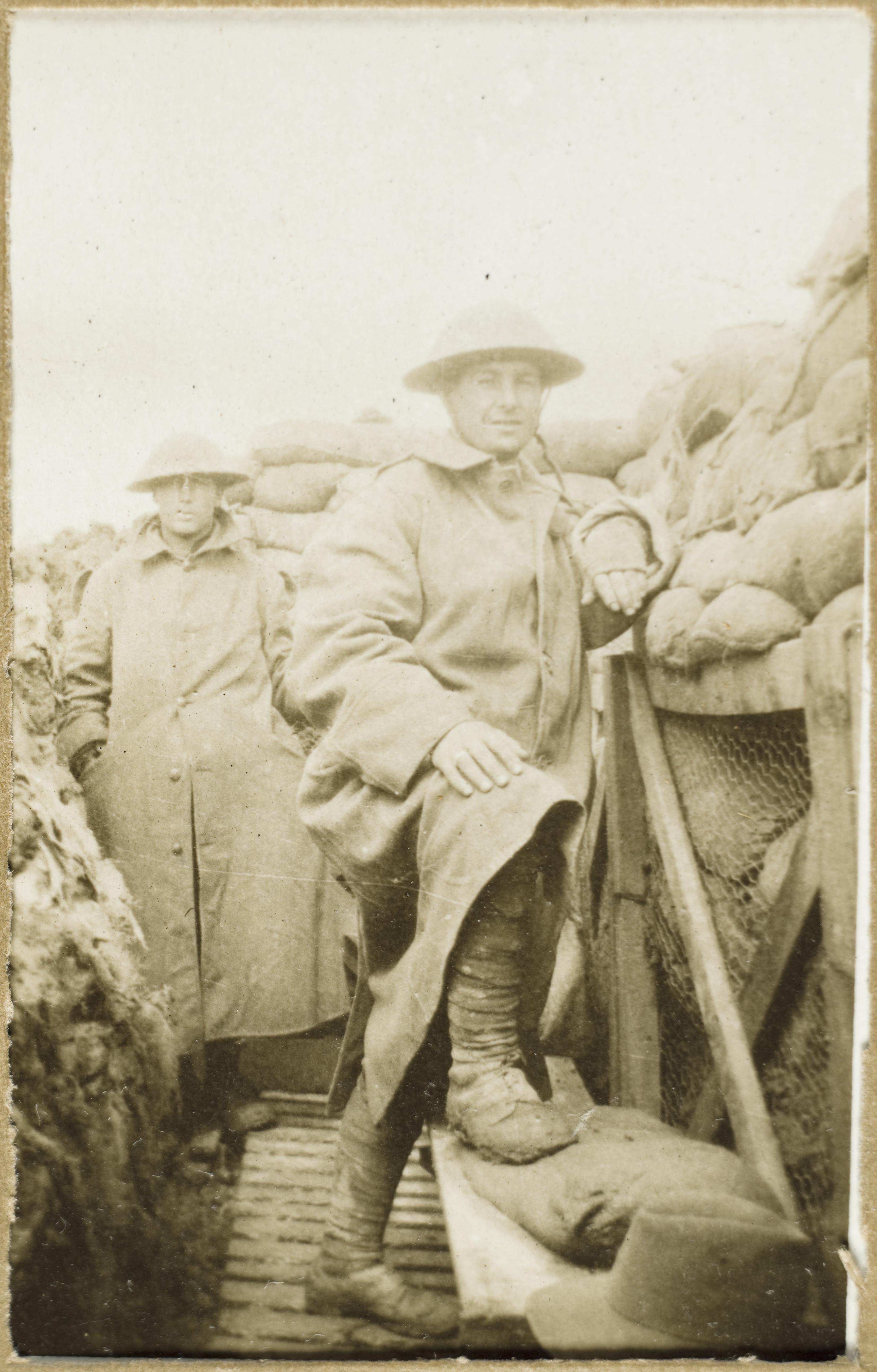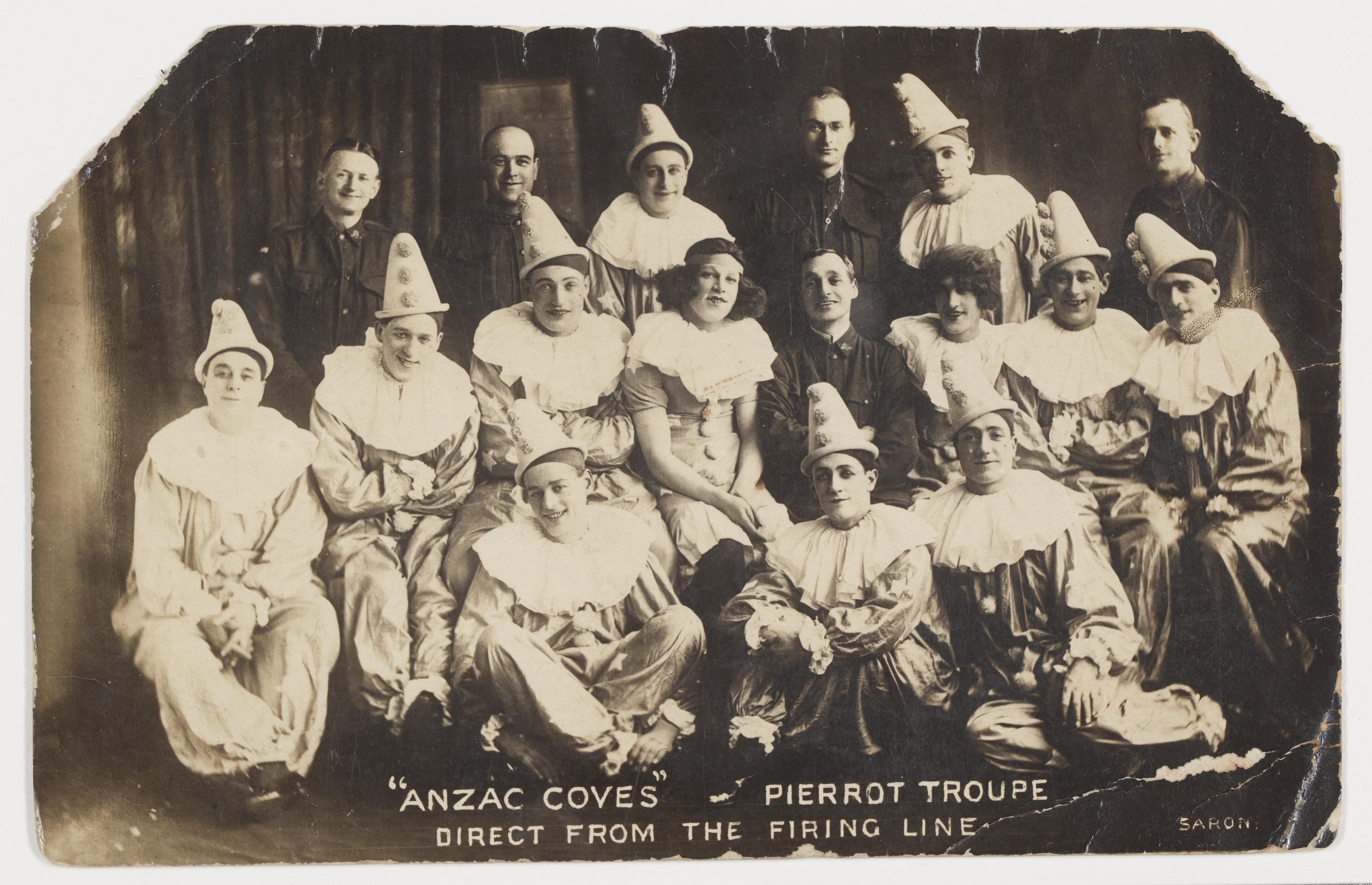The lush green beauty of the country impressed the Australians who had spent months in the desert heat of Egypt and on the dry steep cliffs of Gallipoli. Allan Allsop from Sydney wrote that the ‘grandeur of Southern France at this time of the year is truly astounding’.
And then came trench warfare. No more ‘La belle France’. A shaken stretcher-bearer, Langford Colley-Priest, wrote to his parents:
‘this war not human and is a disgrace to Christianity’. He, like other diarists, tried to describe the noise of war to those fortunate enough not to be there. The sky looked beautiful, one mass of light and star-shells etc. and the booming of guns etc. was deafening … The noise of the guns, grenades and machine guns was terrific. No one can realise what the noise is like unless they are close by.’
Allsop described the sound as:
Chaos and weird noises like thousands of iron foundries, deafening and dreadful, coupled with the roar of high explosives on coal-boxes as they ripped the earth out of the parapet, prevailed as we crept along …
Official photographer Frank Hurley was also in awe of the sights and sounds of battle.
We were just walking along the Menin Road in the twilight, near Hellfire Corner, when our barrage began. Simultaneously from a thousand guns, and promptly on the tick of five, there belched a blinding sheet of flame: and the roar — Nothing I heard in this world or in the next could possibly approach its equal. The firing was so continuous that it resembled the beating of an army of great drums … and the screaming shriek of thousands of shells.
As they read the casualty lists, Australians at home became familiar with once obscure French and Belgian placenames: Fromelles, Pozières, the Somme, Ypres, Bullecourt, Passchendaele. There were so many names on the casualty lists. So many men had just disappeared into no-man’s-land, never to return.
On New Year’s Day 1918, Anne Donnell, a nurse stationed near Ypres, sat on her bed and wept, homesick and exhausted. She had been away from home for three years. Sister Donnell was working in the acute medical ward. Her patients were mainly suffering from gas poisoning and there were lots of pneumonia cases. As she wrote, she could detect the smell of sickly sweet pineapple in the air — the tell-tale sign of poison gas:
‘10 p.m. Will this restless life never end. As I write the shelling is going on again — heavier too. I am not undressing – It’s a terrible life this.’
Anzac Coves
Yet in the midst of it all there were moments of light relief. The Anzac Coves — an entertainment troupe performing songs and skits satirising military life — provided a respite from mud, fear and death and the soldiers loved them. They set up their theatres in barns and sheds, just back from the trenches and their shows were always packed. All of the Coves had seen active service, some at Gallipoli, others at the Western Front. There were singers, comedians, female impersonators, a monologist (who recited poems and monologues), singers, dancers, musicians and burlesque.
They were so popular that they toured Britain during 1918, even performing at Buckingham Palace in front of the King, Queen and Princess Mary.
"In the evening I attended a Pierrot show which was most enjoyable, all the artists were professional, it was a treat to hear some music."
Stretcher-bearer Langford Colley-Priest
“The Anzac Coves
Dispensers of joy and jollity
Fun and frivolity”
The Anzac Coves entertainment troupe performed with a lively sense of humour which satirised military life and the soldiers loved it. They set up their theatres in barns and sheds, just back from the trenches and their shows were always packed. They were so popular they toured Britain during 1918 and even performed at Buckingham Palace in front of the King, Queen and Princess Mary.
‘Straight from the firing line’
All of the Coves had seen active service as soldiers. Some had been at Gallipoli, others at the Western Front. There were singers, comedians, female impersonators, a monologist who was James Brunton Gibb (who recited poems and monologues, singers, dancers and musicians. There was also burlesque.
Pierrots
They were a Pierrot troupe, a part of the musical hall tradition. Pierrots were originally a French entertainment that had spread across the channel to Britain. Pierrots would sing, dance, juggle and make jokes at seaside venues in Britain up until the 1950s.
The Coves had 23 performers and an orchestra and performed for over 250,000 soldiers, writing much of their own material including their 1917 Christmas pantomime, Dick Whittington and his cat. They rehearsed their pantomime in the Ypres area with shells and bombs falling nearby.
The painted scenery and props were all built by the Coves themselves. The theatres they played in were usually large barns or sheds converted into a theatre with a stage, a cinema and electric lights, all carried and installed by the Coves.
Elise Edmonds, Senior Curator, Research and Discovery
Collections:
Allsop war diaries, 1915-1917 / Wilfred Joseph Allan Allsop, MLMSS 1606
Colley-Priest diary, 9 November 1915-11 June 1919 / Langford Wellman Colley-Priest, MLMSS 2439
Donnell papers, 1915-1919 / Anne Donnell
Series 01: Anne Donnell circular letters, 25 May 1915 - 8 July 1918, MLMSS 1022/Item 1
Series 02: Anne Donnell diary, 29 December 1917 - 31 January 1919, MLMSS 1022/Item 2





